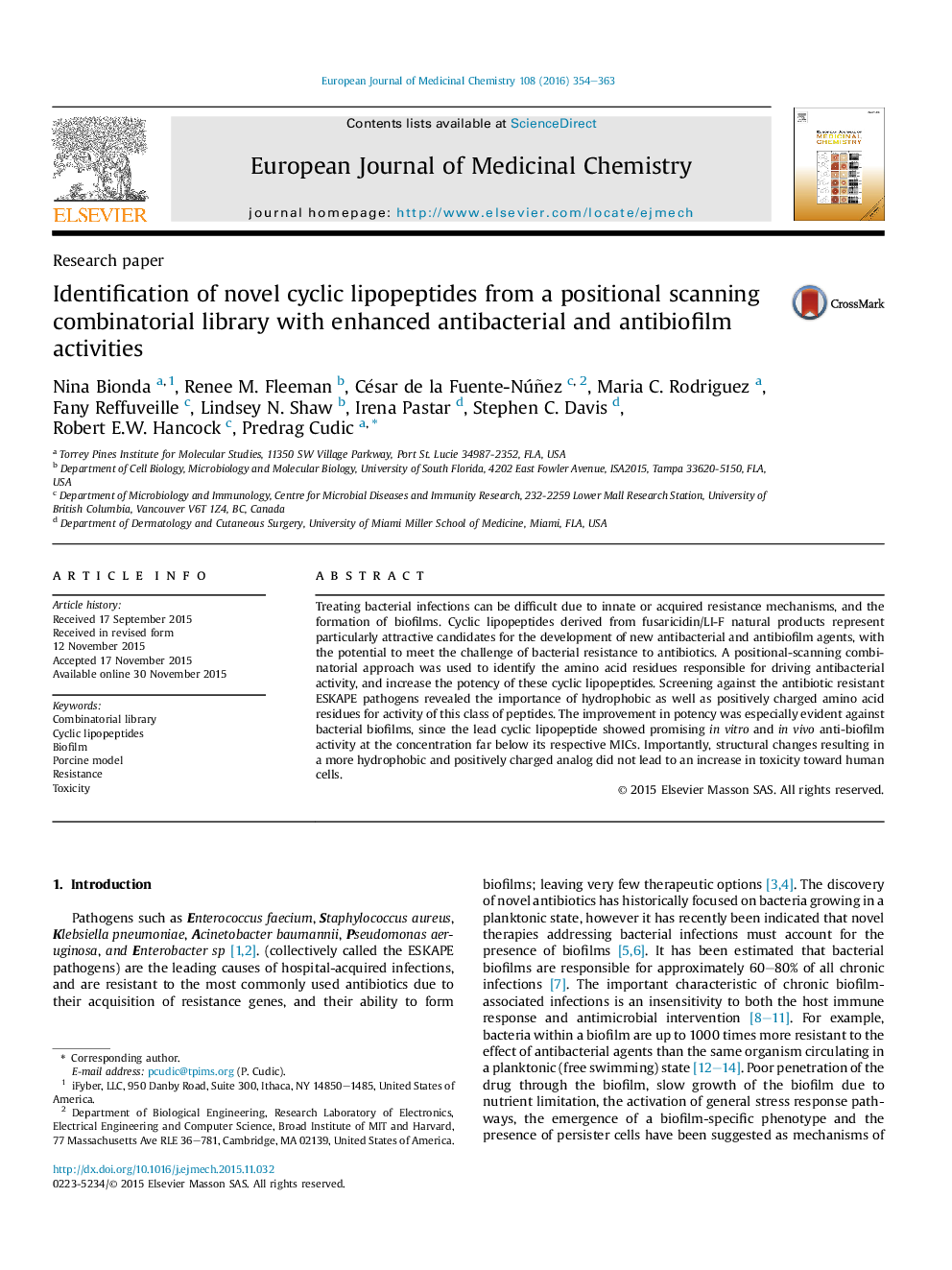| Article ID | Journal | Published Year | Pages | File Type |
|---|---|---|---|---|
| 1393857 | European Journal of Medicinal Chemistry | 2016 | 10 Pages |
•Positional-scanning combinatorial library of cyclic lipohexapeptides was prepared.•Analogs with improved antibacterial activities were identified.•The improvement in activity was especially evident against bacterial biofilms.•Hydrophobic and positively charged amino acids are crucial for activity.•Resulting structural changes did not lead to an increase in nonselective toxicity.
Treating bacterial infections can be difficult due to innate or acquired resistance mechanisms, and the formation of biofilms. Cyclic lipopeptides derived from fusaricidin/LI-F natural products represent particularly attractive candidates for the development of new antibacterial and antibiofilm agents, with the potential to meet the challenge of bacterial resistance to antibiotics. A positional-scanning combinatorial approach was used to identify the amino acid residues responsible for driving antibacterial activity, and increase the potency of these cyclic lipopeptides. Screening against the antibiotic resistant ESKAPE pathogens revealed the importance of hydrophobic as well as positively charged amino acid residues for activity of this class of peptides. The improvement in potency was especially evident against bacterial biofilms, since the lead cyclic lipopeptide showed promising in vitro and in vivo anti-biofilm activity at the concentration far below its respective MICs. Importantly, structural changes resulting in a more hydrophobic and positively charged analog did not lead to an increase in toxicity toward human cells.
Graphical abstractFigure optionsDownload full-size imageDownload as PowerPoint slide
